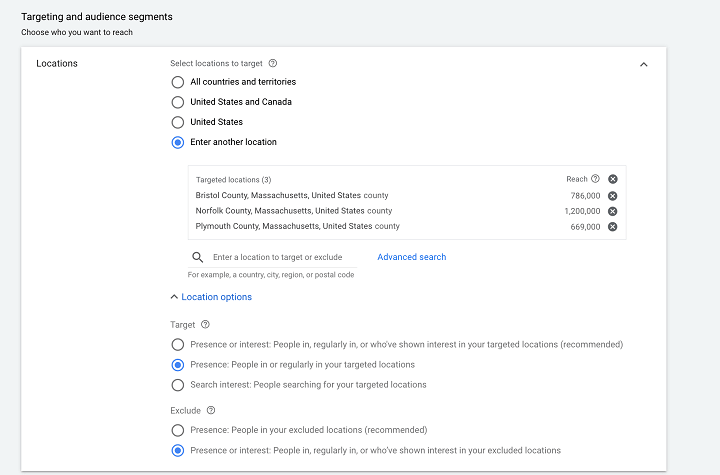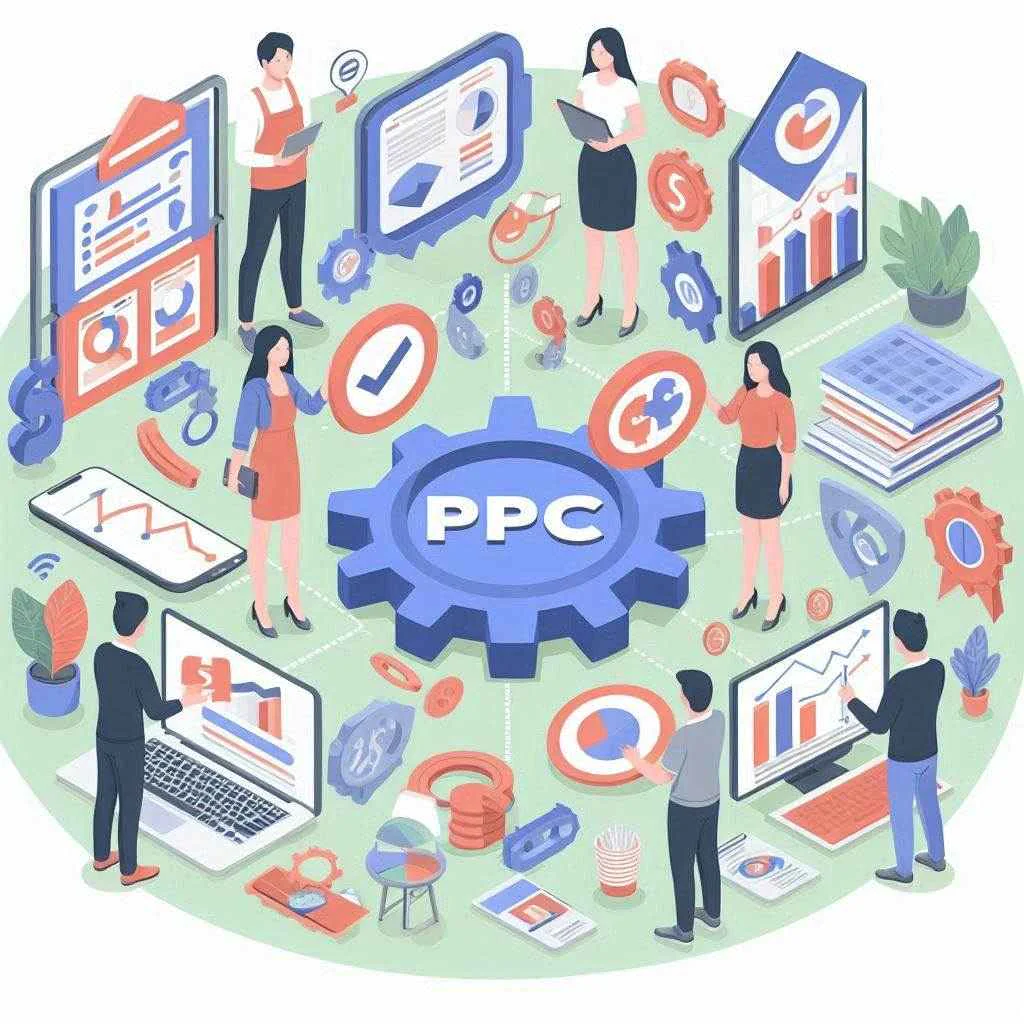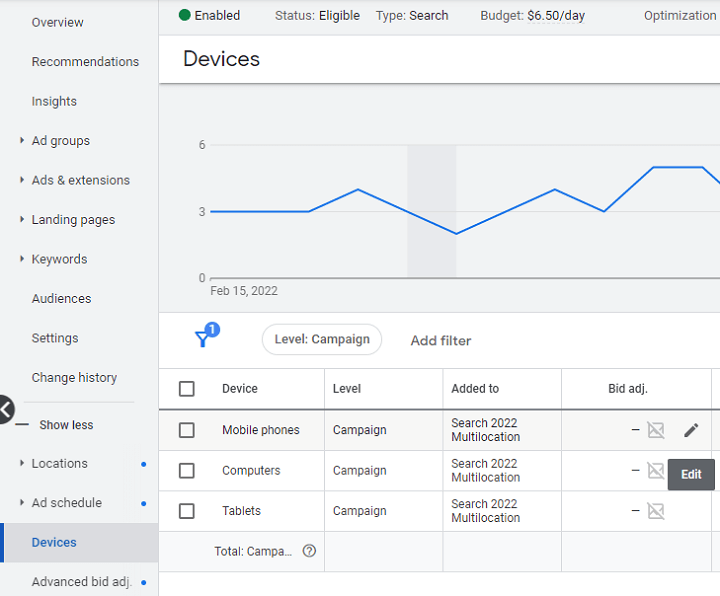How to run a Google PPC campaign

To stay competitive in today’s increasingly fierce online environment, businesses cannot overlook the power of paid advertising. Among the most effective strategies, how to run a Google PPC campaign is the key to helping brands quickly reach the right customers, increase conversion rates, and manage budgets efficiently. However, not everyone knows where to start, how to choose the right keywords, or how to optimize campaigns for maximum profitability. Mastering how to run a Google PPC campaign will not only help you avoid common mistakes but also unlock opportunities for sustainable revenue growth. Let’s dive Rentads into the basics and explore each step of implementation in the following sections.
Google PPC – The Golden Key to Getting Your Brand on Top

Google PPC is more than just an advertising tool—it’s the “golden key” that gives brands a strong competitive edge. When users type in keywords related to your products or services, appearing at the top of the search results often determines whether they choose you or your competitors. This is the real power of PPC: reaching the right people, at the right time, with the right intent. To understand this clearly, let’s look at three aspects: what PPC is, the benefits it brings, and how it differs from SEO.
What is Google PPC?
Google PPC (Pay-Per-Click) is an advertising model where businesses pay only when someone clicks on their ad. In other words, you spend money only when potential customers show real interest. PPC ads can appear at the top of Google search results, across the Display Network, or even on YouTube. This ensures strong visibility, but the most important factor is targeting: you can select specific keywords directly tied to your products so that your ads reach only the right audience. As a result, PPC helps reduce wasted costs while increasing conversion opportunities.
What does PPC bring to businesses?
Many assume PPC is just about paying for exposure, but its benefits extend far beyond that. First, PPC allows brands to reach customers almost instantly. A campaign can be set up in a few hours and start showing ads as soon as Google approves it. This speed is invaluable for businesses looking for quick revenue or launching new products.
PPC provides strict budget control. You can set daily caps, adjust bids for specific keywords, or pause campaigns anytime. This flexibility helps avoid overspending while maximizing ROI. On top of that, Google Ads reports deliver detailed metrics: CTR, CPC, conversion rates, time spent on site, and more. These insights allow businesses to refine not only their campaigns but also their overall marketing strategy.
Finally, PPC enhances brand awareness. Even if users don’t click, repeatedly seeing your brand name on Google builds familiarity and trust, making them more likely to choose you later.
How is PPC different from SEO?
Both PPC and SEO aim to put your brand at the top of Google, but they differ in execution and timeline. SEO requires long-term investment in quality content, site optimization, and backlinks, often taking months to show results. PPC, by contrast, delivers immediate visibility—ads can go live within the same day a campaign is launched.
The trade-off is that PPC stops working once you stop paying, while SEO can maintain results over time. That’s why PPC is like a shortcut to quick wins, whereas SEO builds a long-lasting foundation. Smart businesses use both: PPC for instant customers and SEO for sustainable growth. This combination leverages speed and stability, helping brands secure both immediate and long-term success.
How to Run a Google PPC Campaign Effectively from A–Z

For a Google PPC campaign to deliver real results, it cannot be executed haphazardly. Every step—from setting goals, selecting keywords, writing ad copy, to budgeting—directly affects performance. An effective campaign is like a well-prepared plan where every detail is designed to maximize conversions and minimize waste. Below are four key factors that determine the success of any Google PPC campaign.
Set precise goals
The first and most important step is defining clear objectives. Your goals may be driving website traffic, collecting leads, boosting online sales, or simply raising brand awareness. Without specific goals, it’s nearly impossible to measure success. For instance, if your aim is to increase sales, you should track conversions and average order value. If the goal is awareness, then impressions and CTR matter more. Setting goals upfront is like choosing the right map—without direction, the longer you run the campaign, the more money you waste without reaching the destination.
Research and choose the right keywords
Once goals are clear, the next step is to find the “right keywords”—those that can actually bring in valuable customers. Since Google PPC is keyword-driven, poor keyword choices mean wasted clicks and wasted money. Tools like Google Keyword Planner or SEMrush help identify high-search-volume keywords with reasonable CPC. Don’t ignore long-tail keywords either. They’re usually less competitive, cheaper, and target very specific user intent. For example, instead of just targeting “sneakers,” you might use “affordable men’s running sneakers.” The more specific the keyword, the higher the chance of conversion.
Write ad copy that attracts clicks
Good keywords are useless without compelling ad copy. An effective PPC ad usually has a clear headline, concise content that addresses customer needs, and a strong call-to-action. Always highlight your USP (Unique Selling Point) to stand out from competitors. Examples include: “Free nationwide shipping,” “Get 20% off today,” or “30-day replacement guarantee.” Also, run A/B tests with multiple versions of your ads to see which resonates best with customers. Even small tweaks in the headline or description can significantly improve click-through rates.
Set a smart budget
Budgeting determines whether your campaign can sustain itself. Setting it too low limits ad visibility, while too high without optimization drains your funds. The smart approach is to start with a moderate budget, monitor results in the first few days, then adjust gradually. You can also allocate budget across different keyword groups or time slots. For example, if your audience tends to search in the evening, raise your bids during that period and lower them at off-peak hours. This allocation ensures cost efficiency and maximizes ad exposure to the right people.
Classic Mistakes When Running Google PPC
Google PPC offers a huge opportunity for businesses to reach customers quickly, but if executed poorly, budgets can vanish with little to no return. Some mistakes seem small but are extremely common, costing advertisers significant money. Below are three “classic” mistakes you need to avoid to save resources and ensure your campaigns actually generate profit.
Wasting money by targeting too broadly
One of the most frequent mistakes is setting audience targeting too broadly. Without narrowing down the scope, ads end up showing to many people who have no real interest, resulting in low click-through rates and rising costs. For example, instead of bidding on the keyword “authentic women’s sneakers,” some businesses simply target “sneakers.” This attracts clicks from men or people casually browsing, not serious buyers. To avoid burning money, you need to conduct thorough keyword research, segment keywords by search intent, and use negative keywords to filter out irrelevant queries. Accurate targeting from the start not only saves money but also improves traffic quality, increasing the chances of real conversions.
Running ads without A/B testing
Another common mistake is failing to perform A/B testing. Many advertisers create a single ad and let it run indefinitely, ignoring the fact that consumer behavior evolves constantly. Without testing, you miss the chance to discover which elements actually resonate with users: the headline, the description, or the call to action. For instance, “Buy now” might perform worse than “Order today for a special discount.” Through A/B testing, you can experiment with multiple versions and identify the ones that deliver the highest click-through and conversion rates. Regular testing also optimizes budget allocation by focusing spend on the best-performing ads instead of wasting money on underperforming ones.
Not measuring ROI accurately
Some businesses focus only on clicks or impressions, forgetting that the ultimate goal of PPC is revenue. Without measuring ROI (Return on Investment) correctly, you can’t tell if your ad spend is actually profitable or just wasted. For example, a campaign might generate thousands of clicks, but if conversions are low, the company still loses money. To calculate ROI accurately, you need to integrate Google Ads with Google Analytics, track user behavior after the click, and identify which channels generate the most profit. With this complete picture, you can confidently increase budgets for high-performing campaigns and cut off the ineffective ones. This is the critical step that transforms PPC from a money drain into a true growth driver.
Contact Info
Are you in need of Facebook advertising or need to rent a quality Facebook advertising account? Don’t worry! Rentads is a unit specializing in providing reputable Facebook accounts, as well as direct advertising support. Provides all types of advertising accounts such as google ads account for rent to help you reach and create fast conversions.
Frequently Asked Questions
$100 is a limited budget, so you need to focus on highly targeted long-tail keywords with low CPC, set location-specific targeting, and run ads only during peak conversion hours. Also, leverage negative keywords to eliminate irrelevant traffic. Done right, you can still achieve a few valuable conversions instead of wasting money on meaningless clicks.
Not always. If your product/service can be sold online 24/7, keep ads running to capture off-hours customers. However, if your business only operates during working hours and cannot handle leads immediately, running ads off-hours may reduce efficiency. The best approach is to analyze report data, identify high-ROI timeframes, and adjust budgets accordingly.